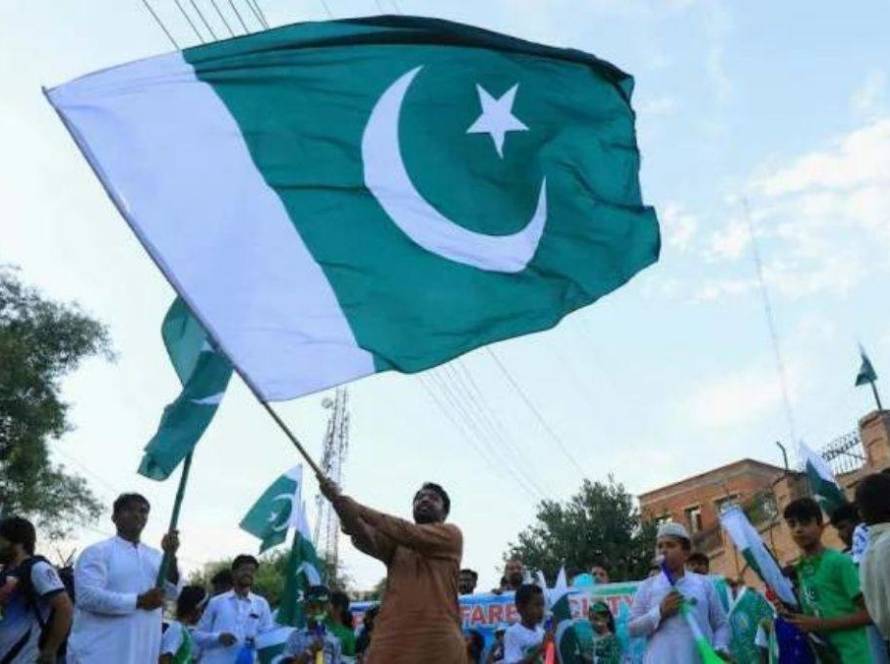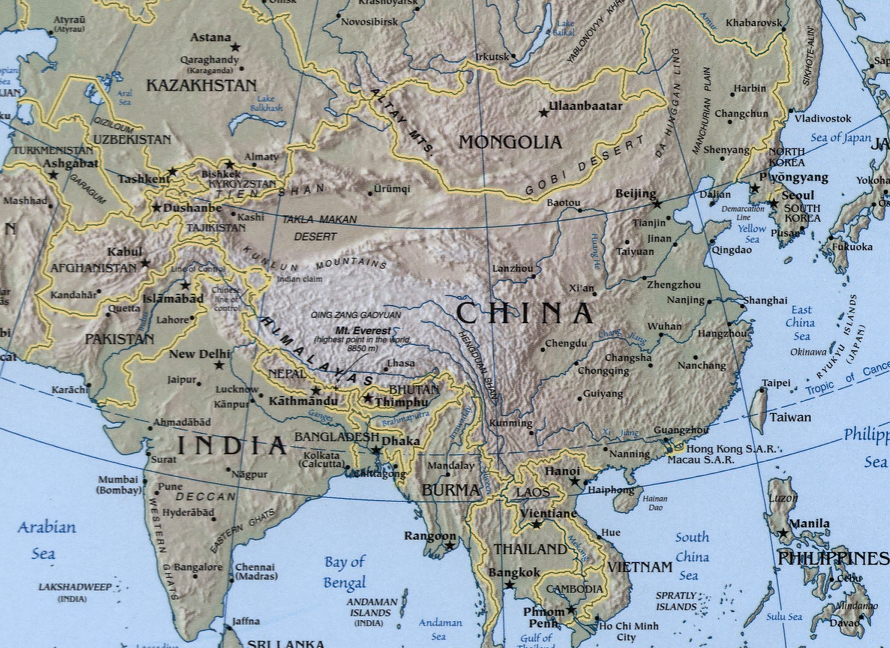By LP
Chinese Foreign Minister Wang Yi’s arrival in Sri Lanka last evening (8) comes at one of the most politically tumultuous times in Sri Lanka’s history. As the forex crisis deepens and over half of Sri Lanka’s gold reserves emptied, there is hope the Chinese will offer much needed assistance to relieve the pressure off the ailing economy.
But to extend measures of solace, the past year has not been promising for Sino-SL relations. China’s strong foothold in Sri Lanka, the cause of chagrin for the U.S. led-West and neighbouring India, seems to have weakened over the past few months. India meanwhile, steadily gaining ground against Chinese presence , has bagged some key development deals in the island nation and even managed to cast enough influence to put a halt to progressing Chinese interests on Lankan soil.
India playing China’s game
An obvious indication of India’s strategy shift in influencing Sri Lanka was on display during Indian Foreign Secretary Shri Harsh Vardhan Shringla’s visit to Sri Lanka in October 2021. Beginning his tour from a visit to the Dalada Maligawa, where he highlighted the rich, historic and cultural roots between the two nations spoke plentifully on India’s plan in harnessing soft power in a bid to influence the Sinhala speaking masses of the country.
This was a sharp shift from India’s traditional foreign policy engagement projections in Sri Lanka, which in domestic political terms was largely defined as pushing for Tamil minority interests. As such, Shringla’s gesture and comments featured India’s wish to nurture engagement and influence over the Sinhala-Buddhist majority, if the Buddhism-themed paintings displayed on the High Commission walls have not been evident enough.
This approach was already harnessed and mastered by the Chinese – their key engagements and outreach catering predominantly to Sinhala-speaking audiences. Significant focus of the bilateral relations were shaped by Buddhist diplomacy – a tool used to support the Belt and Road Initiative – as well as other cultural exchanges that included mass weddings of Chinese couples in Sri Lanka[1] and deployment of Chinese journalists/social media influencers fluent in Sinhalese to familiarise Sri Lankan audiences with the Chinese culture.
India gains – slowly but steadily
But with India now gaining on Chinese strategy in Sri Lanka, China’s foothold in Sri Lanka has suffered several impacts over the past few months. This has been no small feat, given the belief by many that China’s influence over Sri Lanka was irreversible.
Starting with delays in approving the Chinese-produced Sinopharm vaccine, and the most recent being the Chinese pulling out of a power and energy development deal in December 2021 citing security concerns from a ‘third party’[2] – the past year has marked several setbacks for Chinese influence in the island nation. The controversy over the Chinese organic fertiliser vessel and the resultant diplomatic row deteriorated with the Sri Lankan authorities pushing farmers battered by fertilizer scarcity to use Indian-made nano-urea[3]. Marking one win after another, India last week inked a deal to develop the oil tanks in Trincomalee[4]
It is against this backdrop that China has now changed its tune and diverted course. As opposed to focusing on the Sinhala majority, the Chinese are now turning their attention on the North made evident by the recent visit by the Chinese Ambassador to the North. The Ambassador’s tour of the Adam’s Bridge was particularly a topic of contention.
While diplomats’ visiting the Northern province is quite run-of-the-mill, the Chinese’s Ambassador’s tour however cannot be cast in that light given its timing and the geopolitical context. The chain of limestone shoals is a historic landmark of Sri Lanka and India and for years, India has been attempting to reach an agreement with Sri Lanka to develop the islands as the Sethusamudram Shipping canal project, increasing connectivity with Sri Lanka. As such, the Ambassador’s trip indicated a clear message – China was not ready to back down. “This is the end, also the beginning,” the Ambassador told the media after his tour of the Adam’s Bridge.
What do these shifts mean for SL?
These changes in strategy and overt gestures at rivals have obvious and adverse impacts on Sri Lanka. With little to no bargaining power at present and an extremely weak economy, Sri Lanka has made itself vulnerable and ‘up for grabs’ by rising powers vying for power and influence in the region.
Sri Lanka was already on a slow course to being sucked into a rising power sphere of influence. But the trajectory set in 2021 has now set course for Sri Lanka to be caught and manipulated in rising power rivalries. An African proverb says that when the elephants fight, it is the grass that suffers. These would have been wise words for Sri Lankan leaders to remember, but it is now a little too late. With no hope left for a ‘non-aligned and neutral’ foreign policy in practice, the claws of the region’s great powers are dug into Lankan soil, as we steer ourselves deeper into their battleground.
Sri Lanka has already negotiated a financial assistance package from India and are now seeking similar options with China and Japan[5]. The heavy dependency on foreign assistance to stabilize the economy only exacerbates Sri Lanka’s predicament in the global system. Notwithstanding, willingly positioning the country in the midst of rising power competition is a dangerous game to play and damaging to Sri Lanka’s interests, especially protecting its territorial integrity and autonomy. In the place of an independent, neutral foreign policy, Sri Lanka would now increasingly and overtly face the risk of having to dance to the tunes of India and China, as each seeks to cancel each other out, incurring lasting damages to Sri Lanka’s own policies.
It is equally important to remember that this showdown is not only between India and China, but with an India that also supports the U.S.-led Quad interests to push China out of the India-Pacific region as well. The US-USSR cold war and absence of confrontation is often quoted as an example of how a bipolar order could cancel conflict. But is the absence of conflict a guarantee, in a bipolar structure, when the international system is one of anarchy?
Co-ruling or monopolizing?
Competition among rising powers, which at times took a violent turn is the norm in the history of international affairs. It is the clashing interests and ideologies that have created the existing world order and it is also the defining aspect of global politics. Although brief suspension of conflict in the post cold war era pushed scholars such as Fukuyama to prematurely declare the end of history, today, great and rising power competition has returned in a fuller and sharper form. Aided by systemic conditions such as populism and weakening liberal world order, it has diminished America’s margins of dominance.
Another key feature in rising power competitions today is how it plays out in the geopolitical realm. As the rising powers compete to carve out spheres of influence within their respective ‘near abroads’ to undermine U.S. led alliances, the resultant effect is an upswing of rising power competition. As such particularly regional powers should be mindful of falling into the ‘Churchill trap’ – a scenario where two powers plunge into a long-term confrontation, fuelled by long standing rivalries and security precautions, which may lead to regional cold wars,
Recent clashes along the India-China border and the deadly 2020 skirmish that left dozens of Indian and Chinese soldiers dead, pose serious security concerns for the Indo-Pacific region. Presently, with the two giants finding another battleground in Sri Lanka, the question arises on whether the two are on the verge of falling prey to Churchill trap within the region or, is ‘co-ruling’ – the scope for two rising great powers to jointly exercise leadership and domination over all or most of the small countries in the region – a viable option? It is indeed feasible given small states such as Sri Lanka have more than one indispensable demand, which neither powers can simultaneously fulfil, leaving room for the functions of the two powers to be differentiated. This in turn paves way to simultaneously accept the leaderships of both powers.
The cost of an all out clash between India and China is too high. On the one hand it is an illogical course of action particularly for China, which has indicated the dominance it seeks is largely through economic might. Additionally, given that the U.S. will side with India and Russia, likely with China, in a hypothetical scenario of war, the current capabilities indicate that it is likely impossible for any side to win. As such, accepting the state of co-ruling and power sharing with the rival is a logical choice, with the hope of eventual monopolizing.
However, the geopolitical context in this case plays a higher role than other factors. India will not want its rival potentially confronting them on two sides geographically. Thus, India will not settle for a co-ruling arrangement, which indicates the likely course of action will be for monopolizing influence and power over Sri Lanka and the Indian ocean region. This will likely push the two countries into a Churchill trap, indicating the Panchasheel Treaty[6] might not always be a referral point in Indo-Chinese relations going forward – a key factor for Sri Lanka to consider before it casts itself deeper into the rising power battles.
(The writer is currently reading for Masters in International Relations and specializes in public diplomacy and communication).
[1] https://www.reuters.com/article/us-sri-lanka-china-massmarriage-idUSKBN1EB0QI
[3] https://www.thehindubusinessline.com/economy/agri-business/iffco-first-beneficiary-of-sri-lankas-policy-to-import-chemical-fertiliser/article37185995.ece
[4] https://www.thehindu.com/news/international/india-inks-deal-with-sri-lanka-to-develop-trincomalee-oil-tank-farm/article38162574.ece
[5] https://www.themorning.lk/government-turns-to-china-and-japan/
[6] http://www.mea.gov.in/Uploads/PublicationDocs/191_panchsheel.pdf


